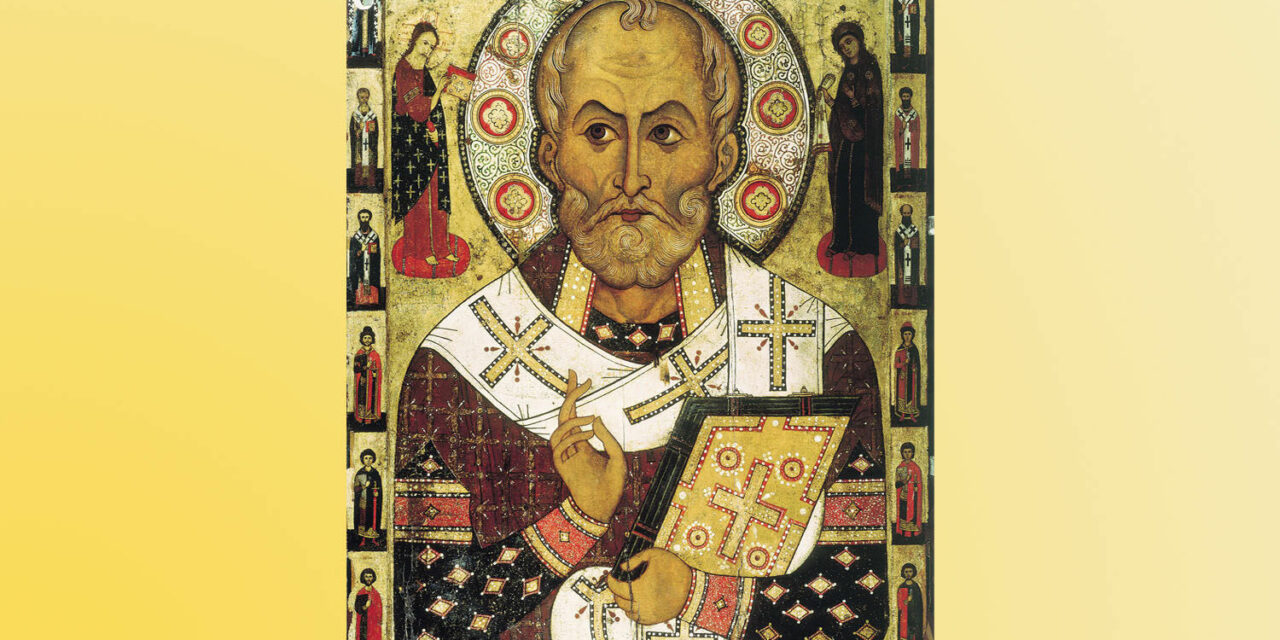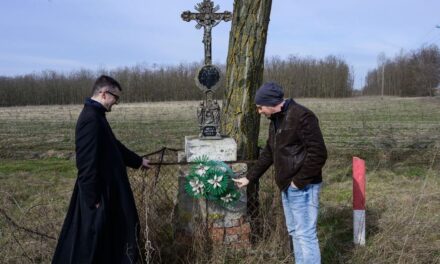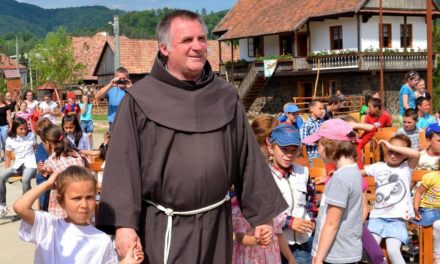On December 6, the Catholic Church commemorates Bishop Saint Nicholas, who is the harbinger of Christmas with his generous and generous love for his neighbor. This day is also the much-awaited Santa Claus holiday for children.
Saint Nicholas (Nicolaos) is the most revered saint of the Eastern churches, his feast has been celebrated in the West since the 10th century. According to tradition, Miklós was born in the 3rd century in Patara in Asia Minor, into a wealthy merchant family. It is believed that he kept the fast even when he was a baby, and on those days he only nursed once. He lost his parents at an early age, and was raised by one of his relatives, the town's bishop. After his conversion, Miklós distributed his inheritance for charitable purposes, and the faithful elected him bishop of Müra by divine sign. He held the office for fifty-two years. He was imprisoned during the persecution of Christians by emperors Diocletian and Galerius (303-311). In 325 he participated in the Council of Nicaea convened by Emperor Constantine the Great. He won people's respect and love through his charity, and because of his actions, he was already considered a saint in his lifetime.
According to legend, he died on December 6, 343 in his episcopal seat, and his grave became a place of pilgrimage even then.
When Müra was occupied by the Muslim Seljuk Turks in 1087, sailors from Bari, Italy, took his remains to their city, where they built a basilica in his honor, and his relics Pope Orbán placed it on the high altar. (Some of the relics were taken to Russia in May 2017, in accordance with the agreement of Pope Francis and Patriarch Kirill of Moscow the previous year, and were put on public display for a few months in Moscow and then in St. Petersburg, with a million people queuing up in the Russian capital alone to catch a glimpse of them.)
The cult of Miklós began not long after his death, as early as the 6th century, the Byzantine emperor Justinian I built a church for him in Constantinople.
Countless legends are attached to the saint's name. It is considered among his miracles that he calmed down a terrible storm with his prayers and saved a sailor who had fallen into the water, so he is the patron saint of travelers, merchants, pilgrims, sailors and navigators. When his city was hit by famine and an evil butcher killed three small children to measure their meat, Miklós exposed his crime and even resurrected the boys, therefore he is also the patron saint of children and students.
According to another legend, during the famine, he persuaded the captains of the ships that came to the port to replenish the imperial grain supplies to give the city one hundred meters of grain from each ship, because this shortage would not be noticed by the inspectors.
The sailors did so, but when they arrived in Byzantium, they were amazed to see that the cargo had not decreased by a single grain of grain. According to yet another story, when Miklós heard that the governor wanted to execute three innocent people for his wealth, he prevented the infringement by leaving the emperor's envoys with him at the wooden image. The delegates who returned to the court were sent to prison on false charges by their enemies, and before their execution they themselves begged Miklós for help. Saint Nicholas appeared in Emperor Constantine's dream and asked him to release the prisoners. The emperor, who did not know the bishop, began to doubt, but when it turned out that the trial judge had seen the same dream, he re-examined the case and released the accused.
According to the most famous legend associated with his name, there lived a poor man in Müra who could not marry his three daughters because he did not have enough for the dowry. The matter reached the ears of Miklós, but the bishop was too modest to openly help. Rather, he threw three purses to the father under the cover of night, so the girls were saved from being sold as prostitutes. For this deed, Saint Nicholas is the patron saint of the unmarried and the virgins, as well as the protector of marriage and motherhood. He is also the patron saint of Russia, Greece, Sicily, Lorraine and Apulia, the owners of pawnshops, perfumers, pharmacists, brandy brewers, and the city of Kecskemét in Hungary.
The feast of St. Nicholas is like the vigil of Christmas, its introduction and traditions have merged with the Christmas circle.
He has been classified as one of the fourteen helping saints since the Middle Ages, and the greatest respect was shown to him in old Russia. In Hungary, his respect was based on his Byzantine connections, and settlements were named after him, including Kunszentmiklós and Szigetszentmiklós.
The cult of Santa Claus (Mikulás is the Czech form of the name Miklós) was formed as a result of the stories related to his generosity and kindness. The custom of giving presents on Santa Claus is connected to his figure, who walks in a long, furred, red cloak, has a thick beard, and wears big boots.
In German-speaking areas, Santa Claus has menacing-looking "companions" who threaten to beat or even eat bad children: in Germany, Knecht Ruprecht, who walks on stilts, in Switzerland, Schmutzli, in Austria, the Krampus, also known in Hungary. The custom of gift-giving spread in Hungary through the urban intelligentsia, presumably due to German-Austrian influence, and reached the villages only in the last century, although the peasantry had Santa Claus costumes earlier. St. Nicholas' Day in the Hungarian folk calendar was a day forbidding women's idols, it was also a fertile day for the birth of piglets, and the day for paying season tickets.
The legend of the bishop lives on in different versions on the lips of different peoples, and accordingly his name is Saint Nicholas, Heiliger Nikolaus, Mikulás, the Santa Claus known in America is a distorted version of the Dutch Sinterklaas.
The name Santa Claus spread to Central and Eastern Europe after the Second World War due to Soviet-Russian influence: according to the Russian tradition, Gyed Moroz (Fagy apó) and the kind Sznyegurocská (Hópelyhecske) bring the fir tree with the gifts, but on New Year's Day.
Source: vasarnap.hu
The cover photo shows the icon of Saint Nicholas in Novgorod. Source: Wikipedia.org












